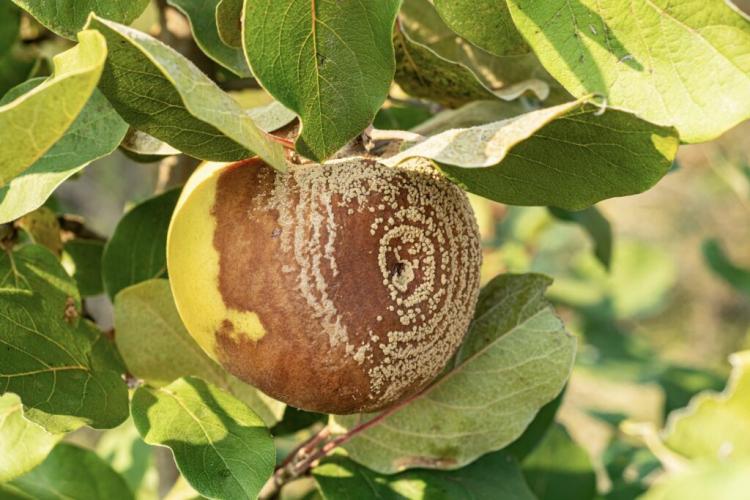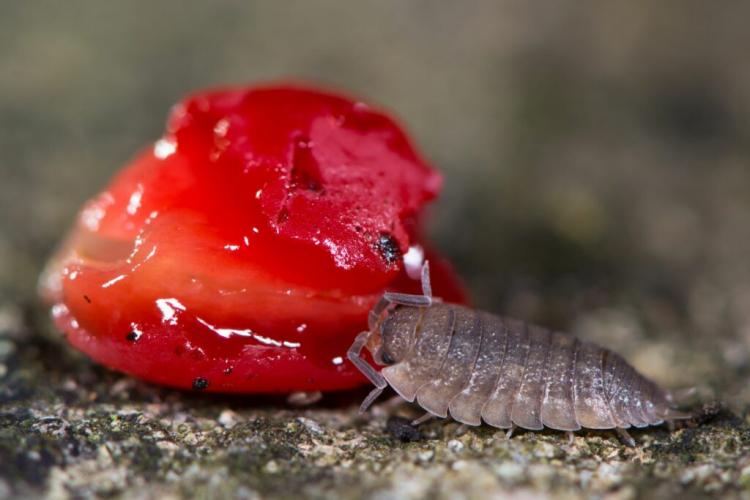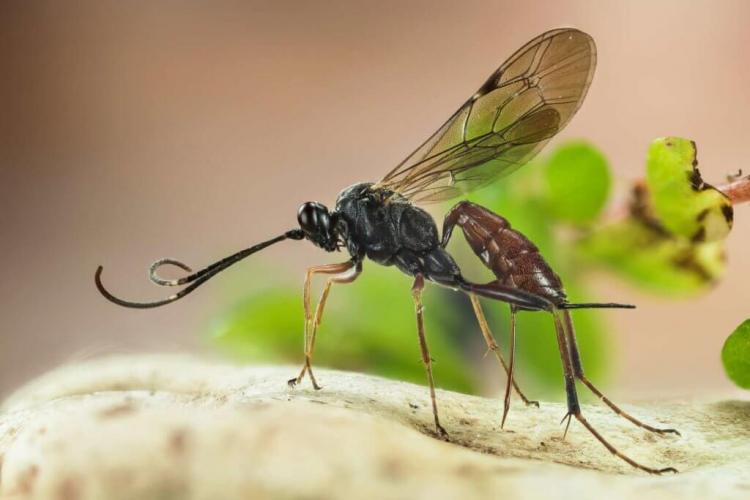Wasp Sting: How To Avoid And Treat It
Wasp stings can be extremely uncomfortable. You can read here how to avoid stings and what to do if you have been stung.
Wasps are still widely regarded as aggressive animals that sting for no reason. However, this image about wasps is better to reconsider. Because wasps are very well able to differentiate between a threatening and a non-threatening situation. Hectic movements and the direct breathing or blowing on a wasp, for example, are immediately perceived as a threat. Admittedly, it is very difficult to stay calm when a wasp is buzzing around right in front of your eyes. In such a situation, however, often only the right behavior can save you from a sting. Waiting or moving slowly and in a controlled manner will spare you from a sting. Hectic waving, however, will provoke the wasp to sting. The situation is completely different in the direct vicinity of a wasp’s nest. There you will be perceived as a threat from a certain distance and the closer you get to the nest, the more likely it is to be stung.
Prevent wasp stings from free-flying wasps
Table of Contents
Even if you don’t have a wasp nest in your garden, you will hardly be able to prevent wasps from coming in during the summer. Much more important is the right way to deal with unloved neighbors to avoid painful stings. Consistent use of insect protection nets helps to avoid wasps in the home. When the nets are properly attached, your living space is completely protected from wasps. The situation is different outdoors, such as on the terrace or in the garden. Here you are helplessly exposed to the sometimes aggressive wasps at a barbecue party or the morning breakfast in summer.

The German Wasp is considered a little less aggressive
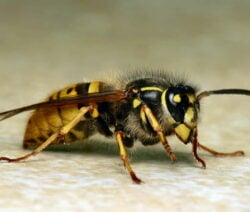
The common wasp lives up to its name
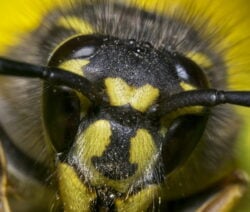
The common wasp reacts aggressively, especially near the nest
The common wasp and the German wasp, in particular, like to enrich themselves with sweet dishes and meat because they have no fear of contact with people. Relatively effective protection against annoying wasps and an avoidable sting are water spray bottles. A targeted puff of water on the wasp and usually turns away. Because the wasp now thinks it is starting to rain and for this reason goes to the nest. So that you are on the safe side and survive the summer without a stitch, we have summarized other important aspects for you:
- Cover open food as much as possible.
- Wasps can get into unattended drinks and be swallowed, so cover drinks better or use a straw.
- Wash mouth and fingers after eating; pay attention to this, especially with children.
- Remove windfalls as they attract a large number of wasps.
- Perfume, brightly colored clothing, and creams can also attract wasps.
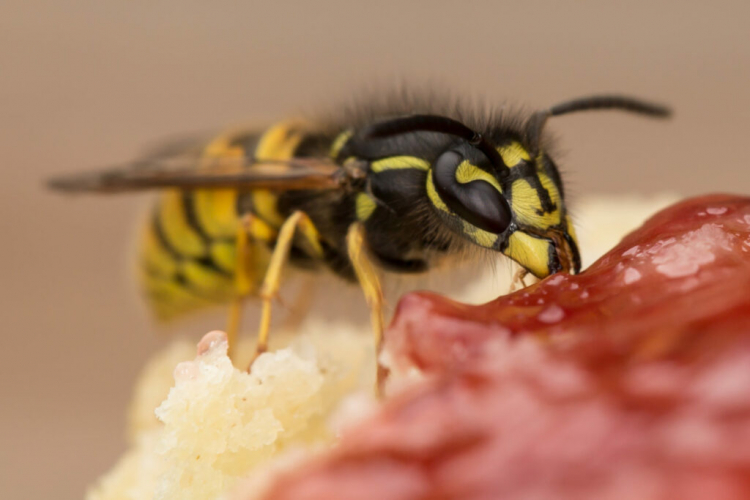
There is also a very efficient way to keep the wasps away from you and the food. In summers with a large number of wasps, the wasps should always be provided with an “alternative meal”. Of course, this should be done in a place where the wasps won’t bother anyone. The wasps gratefully accept sweet fruit waste and small amounts of meat waste. The wasps remember the place after a while and routinely fly to it and never even bother to look for food at your dining table.
Avoid wasp stings on the wasp nest
For a wasp state, the nest is the basis for life. The wasp queen lives there and takes care of the offspring with workers and at the same time, the nest serves as protection in adverse weather. Without the nest, the wasp colony would be lost and therefore it is not surprising that wasps will defend their nest at all costs. A wasp’s most effective weapon is the sting. With this, you can (in contrast to the bee) stab several times. If you want to be on the safe side, you should keep a distance of at least 3 meters from a wasp’s nest. This distance is only a guideline, however, because wasps that have often been disturbed can also attack at greater distances.
In any case, you should always move calmly and not hectically in the direct vicinity of a wasp’s nest. In the same way, vibrations should be avoided and covering the approach holes on the nest. If you poke around in the nest, then stitches are practically inevitable. Should it come to an attack by wasps, then you have to leave the scene purposefully, but without hectic movements. Wasps can use pheromones to make other wasps sting, so you need to create a space between the nest and the wasps and yourself.
By the way, small wasp nests that are not in dark places are often built by more peaceful wasps. The more aggressive wasp species only build their nests in dark areas and the nests become relatively large as the season progresses. A pumpkin-sized wasp nest of the more aggressive common or German wasp is not uncommon. You can read here how to deal with a wasp’s nest.
What to do after a wasp sting?
First and foremost, good news: Since the stinger does not usually fall off in wasps, it does not get stuck in the skin, as is the case with bees. This means that less poison is released into the body. The bee’s stinger has a poison sac that continuously pumps venom into the wound until the stinger is pulled. So if you’ve been stung by a wasp and can’t find a stinger, that’s a bit of consolation. A wasp sting can be very painful, but in most cases, it is not dangerous to your health. To keep the swelling and pain caused by the wasp sting within limits, a few points should be observed.
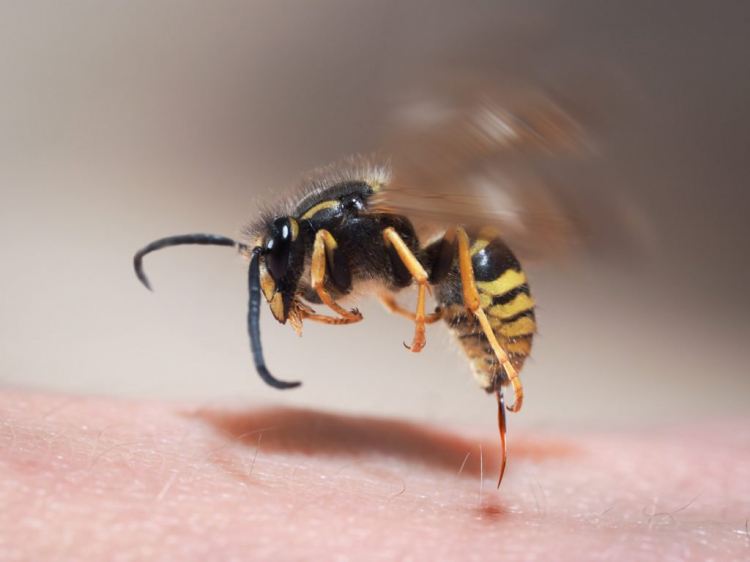
Treat wasp sting
- Thoroughly disinfect the puncture site
- Immediate and continuous cooling counteracts excessive swelling
- Special ointments from the pharmacy help against the itching
- The well-known onion is now very controversial; It shouldn’t necessarily work against the swelling and pain
- Aloe Vera helps against pain and swelling and prevents inflammation.
With a wasp sting, the severe pain often disappears after a short time. After 3 days at the latest, the pain should have disappeared and the swelling should have decreased noticeably. If symptoms have not improved after this period, you should definitely see a doctor.
We recommend the following products:
- Electronic stitch healer: For the external treatment of insect stings and insect bites (such as mosquitoes, wasps, bees, hornets, or horseflies). It works quickly against itching, burning, pain, and swelling and is also suitable for pregnant women and allergy sufferers.
- Fenistil Roll-On: The cooling Fenistil gel has a calming effect on insect bites and sunburn.
- Insecticide remover: compact and easy to use. Ideal to take with you when bathing, traveling, hiking.
When wasp stings are really dangerous
It can only be dangerous if the wasp stings in the mouth, throat, or throat area. The swelling can make breathing difficult or even stop completely. A doctor should be consulted immediately. Until the treatment, the puncture site can be cooled so that the swelling is delayed. Wasp stings are even more dangerous for people who are allergic to wasp venom. This affects about 3% of the German population. Here a single sting can be life-threatening, while in a person without an allergy it only becomes really dangerous after 100 stitches.
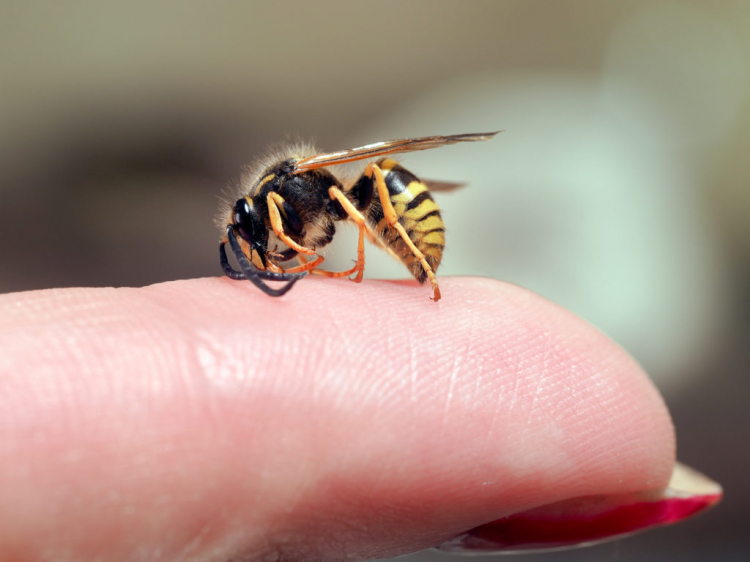
An allergy manifests itself after a bite in the form of rashes, headaches, dizziness, shortness of breath, and severe swelling of the puncture site. In this case, too, a doctor must be consulted immediately! The worst case for an allergic person is anaphylactic shock. This is announced by symptoms such as tingling and burning in the mouth and throat, racing heart, drop in blood pressure, vomiting and unconsciousness. In the worst case, the state of shock leads to respiratory and circulatory arrest. People who are allergic to wasp stings should therefore always have an emergency kit with them with special medication.
